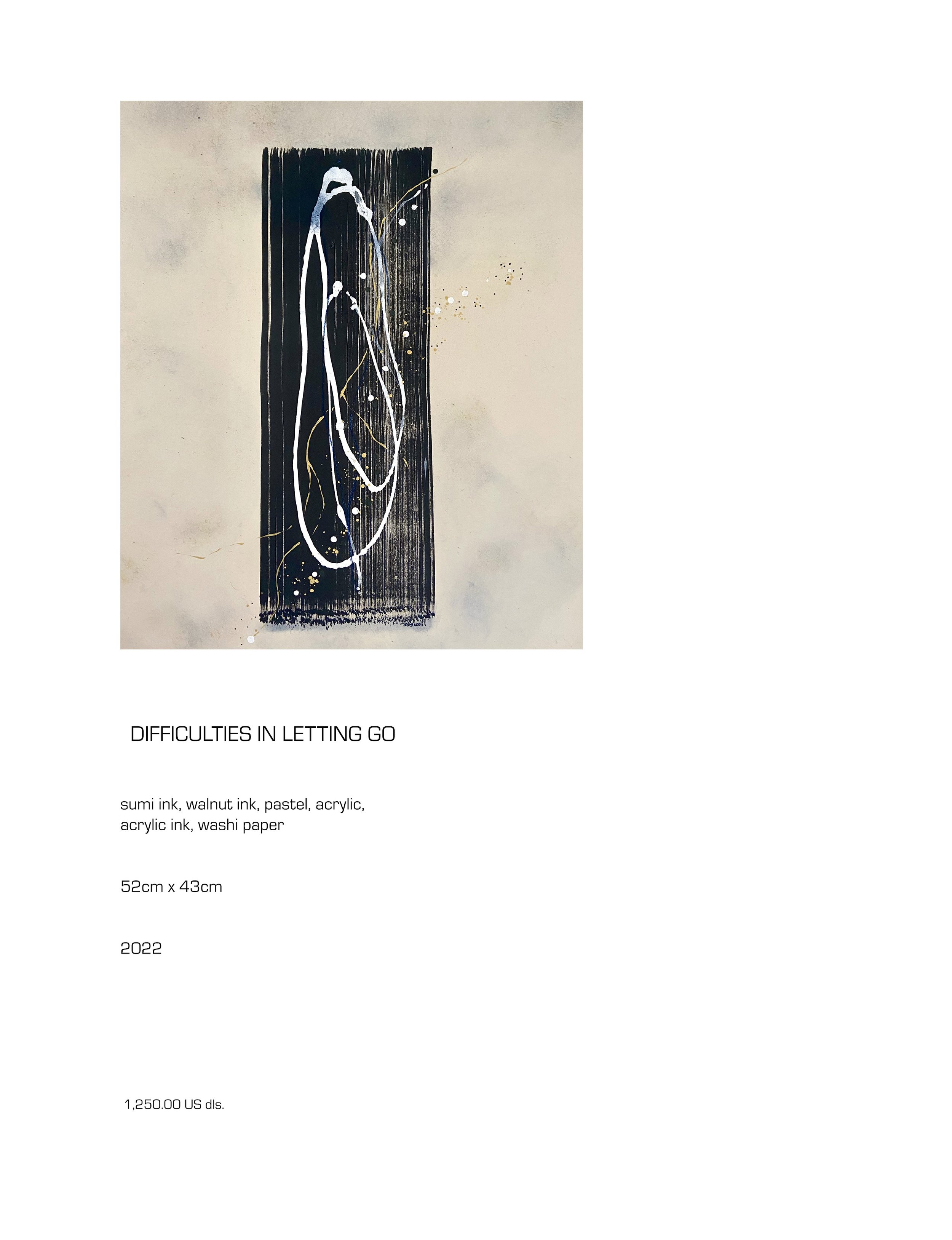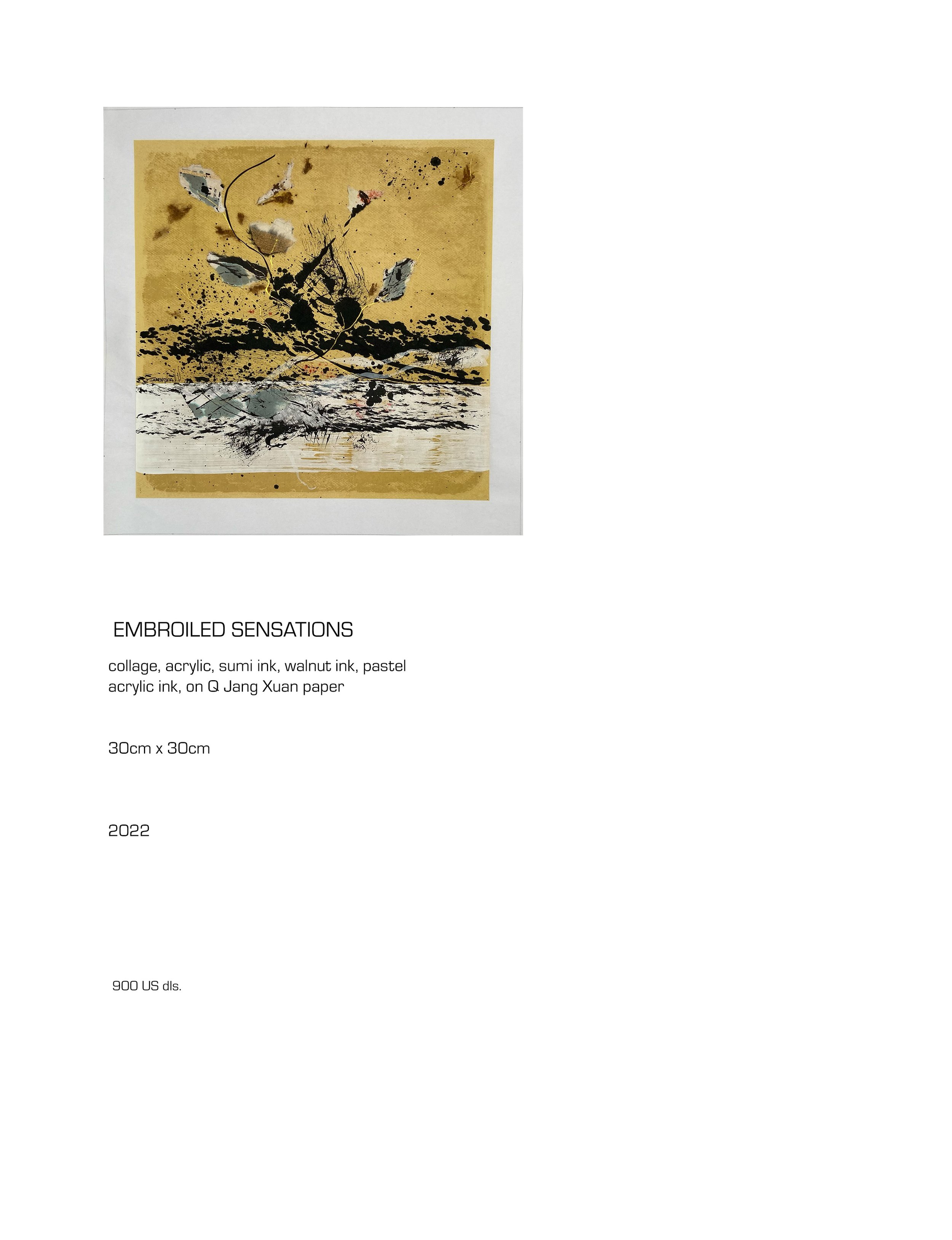Sabrina Villaseñor
Sabrina Villaseñor
Sabrina Villaseñor emerges as an artist whose work is a contemporary homage to the rich tapestry of pre-Hispanic culture, weaving its ancient symbols, figures, and forms into the modern fabric of fine art. Her paintings are visual narratives that speak of a profound search for cultural identity and heritage, bringing to life the ineffable voices of a past that refuses to be silenced by the progression of time.
The oeuvre of Villaseñor presents an eclectic yet harmonious blend of textures and mediums—acrylic, sumi ink, charcoal, walnut ink, and pastel on various substrates from washi to canvas—each piece becoming a testament to her versatility and command over her craft. One may be inclined to compare her to the likes of Cy Twombly, whose work similarly encapsulated a cryptic symbolism, and Robert Rauschenberg, for the incorporation of mixed media that constructs a palimpsest of modern consciousness. Yet, Villaseñor stands distinct, her work deeply rooted in the fertile grounds of Mesoamerican tradition.
Her piece "Against All Odds" is a chaotic symphony of darkness and light, where the blackness seems to surge from the canvas, reminiscent of the dramatic intensity found in Goya's "Black Paintings." The sporadic incursions of gold and touches of red within the piece could be seen as an allusion to the revered sun in Aztec mythology, a source of life emerging from chaos. In contrast, her work "Awareness of Circumstances" is a meditative composition that speaks to the Zen-like minimalism of a Franz Kline painting, yet it is imbued with a sense of ancient script, as if each stroke is a character from an undeciphered codex.
"Deepening," with its mysterious central form surrounded by gestural marks, evokes the abstract expressionism of Kandinsky while simultaneously conjuring images of shamanic visions, a spiritual quest for depth captured through the interplay of shadow and ephemeral light. In "Detained," Villaseñor demonstrates her prowess in creating tension and narrative, where the viewer is confronted with a sense of confinement, an echo of the physical and metaphysical bindings that pre-Hispanic cultures might have contemplated.
Her titles themselves are poetic invocations that guide the viewer into the intended emotive space. "Difficulties in Letting Go" and "Embroidered Sensations" suggest an intimate relationship between the artist and her work, one that speaks of personal journeys and universal truths wrapped in the gossamer of historical continuity.
The pricing of her art, varying from 500 to 4,500 US dollars, reflects not only the intrinsic value of her work but also her accessible approach to the art market. This strategic positioning allows collectors of diverse backgrounds to invest in pieces that hold both aesthetic and historical significance. Villaseñor is not just selling paintings; she is offering segments of a narrative that spans centuries.
In the contemporary art scene, Villaseñor finds her placement among the vanguard of artists who are not merely painting but are also performing acts of cultural reclamation and dialogue. Her work does not simply hang on a wall; it serves as a portal to the past, engaging viewers in a conversation that is as much about the future as it is about the origins of her culture.
Villaseñor's artistry is not contained by the boundaries of canvas or paper; it is an ever-expanding universe where each piece is a constellation linked to the next, forming a cosmos of cultural memory and artistic innovation. Her paintings are not static; they are living relics of a time that is both ancient and strikingly present. As she continues to explore and express her heritage through the language of modern art, Sabrina Villaseñor does not just create; she resurrects, reimagines, and reinvents the echoes of pre-Hispanic civilization for the contemporary eye.
In the realm of contemporary art, Sabrina Villaseñor's work stands as a profound philosophical manifesto, a bridge between the ancestral and the avant-garde. Each stroke on her canvas is a deliberate act of remembrance, a defiance of the temporal boundaries that segregate the ancient from the modern. Her unique approach to creation is not merely a technique but a ritual, where each medium used becomes an alchemical element transforming base materials into precious cultural artifacts. Her artworks are unique not just in their aesthetic but in their essence, each one a solitary universe with its own set of laws and logic. Villaseñor's canvases are like palimpsests, where history and personal narrative are inscribed and reinscribed. Her art speaks the language of symbols, a language that predates words and is understood on an almost primordial level. She channels the collective unconscious, tapping into shared memories and histories that, while specific to her cultural heritage, resonate with universal themes of struggle, enlightenment, and transcendence. Her work does not represent; it embodies. It does not illustrate; it invokes.
The philosophical depth of Villaseñor's art can be compared to the existential meditations of Alberto Giacometti, whose sculptures encapsulate the profound isolation and complexity of the human condition. Yet, where Giacometti’s figures are trapped in the physicality of their form, Villaseñor’s abstract expressions transcend physicality, becoming ethereal maps charting the intangible territories of the soul.
Each piece is a journey, not a destination. The viewer is invited not to observe but to voyage through layers of time, emotion, and consciousness. Like the mysterious symbols of a forgotten dialect, her works beckon to be deciphered, offering endless interpretations. In "State of Complexity," for example, the interplay of gold leaf and sumi ink on paper is less about the contrast of materials and more about the interweaving of opulence and obscurity, mirroring the complex nature of human understanding and the pursuit of enlightenment through the mire of existence.
What makes Villaseñor's art so unique is this transcendent quality, the ability to connect on a metaphysical level with the observer. Her paintings are not passive; they are catalysts of introspection and inquiry. In "Unraveling Doubts," the juxtaposition of defined forms against chaotic splashes of ink suggests the eternal human struggle to find order within chaos, to make sense of the incomprehensible.
Sabrina Villaseñor stands as an architect of bridges, constructing passageways between epochs, philosophies, and inner revelations. Her work is a testament to art's power to communicate across centuries, a dialogue that stretches backward into the mists of time and forward into the realm of possibility. Her canvases are not mere objects of visual pleasure but are imbued with the task of carrying the torch of ancient wisdom through the corridors of contemporary discourse. They stand out not only as pieces of art but also as embodiments of living philosophy, each serving as a contemplation on the nature of human existence and the quest for significance amidst the immense mosaic of life.
By Marta Puig
Editor Contemporary Art Curator Magazine













